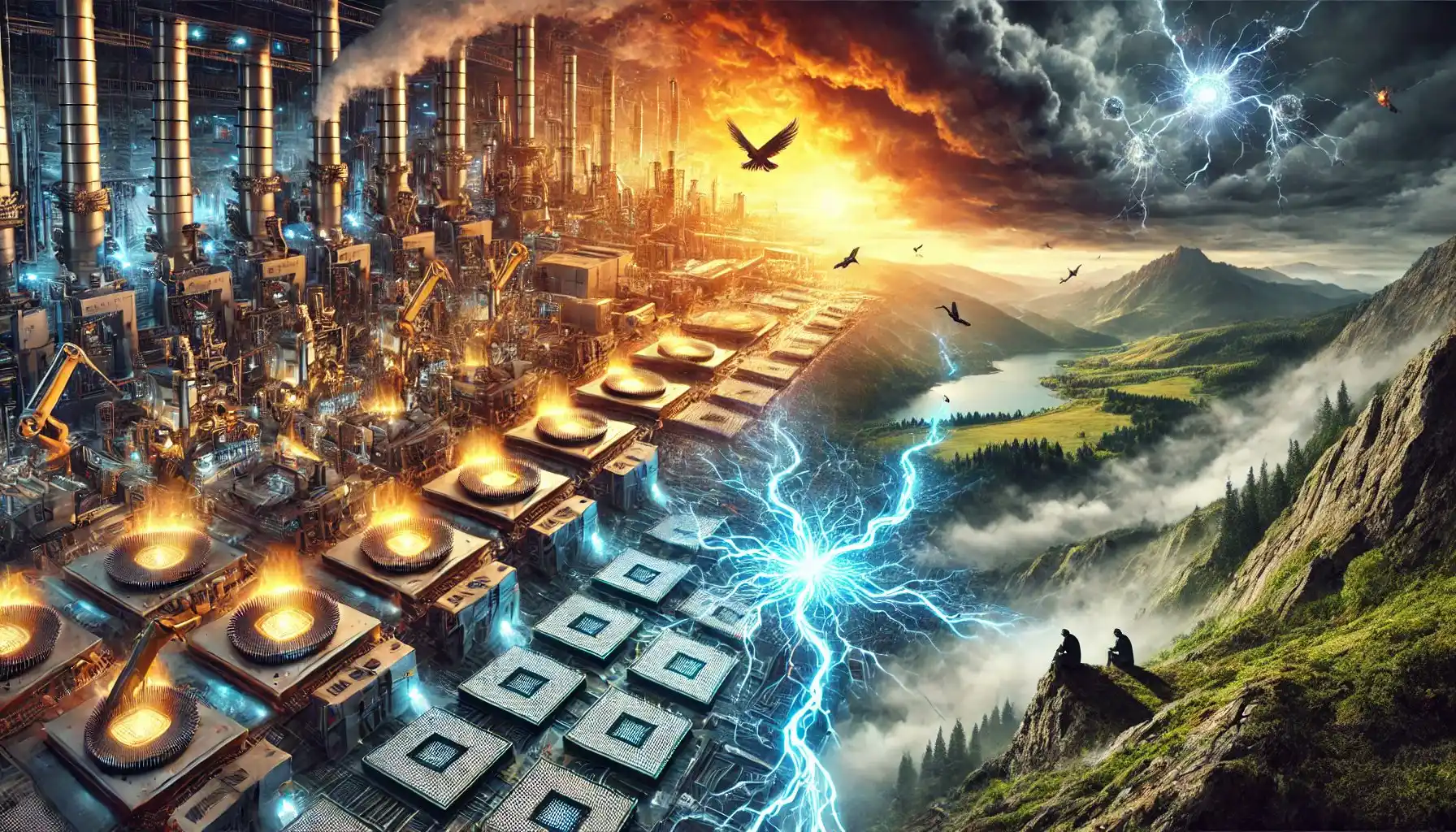1. Introduction: The Unseen Battleground of Silicon and Earth
In the twilight of the 21st century, a silent battle rages, its front lines etched not in trenches or battlefields, but in the labyrinthine factories where silicon wafers are forged and the rugged landscapes where rare earth elements lie hidden beneath the surface. This is not a clash of armies, but a struggle for control over the very materials that power our world – semiconductors and rare earth metals. They are the lifeblood of the modern age, the invisible threads that weave together our economies, defense systems, and technological progress.
Imagine a world without the sleek smartphones that fit in our pockets, the sophisticated medical equipment that saves lives, or the intricate defense systems that guard our nations. Now, picture a world where access to the fundamental building blocks of these technologies is controlled by a single, dominant power. This is not a fictional dystopia, but a looming reality – a reality that demands our immediate attention and strategic action.
Semiconductors, the tiny chips that form the brains of our devices, are as critical to modern life as electricity itself. They drive our communications, transportation, healthcare, and financial systems. They are the quiet enablers of the information age, yet their production is concentrated in a few volatile regions, primarily in East Asia, leaving the rest of the world dangerously exposed to potential disruptions. These disruptions aren’t mere inconveniences; they could trigger economic collapses, technological stagnation, and geopolitical instability that destabilizes the entire world.
But semiconductors are not the only cause for concern. The rare earth elements – a collection of 17 metals with esoteric names like neodymium, dysprosium, and terbium – are equally vital, yet they are shrouded in an even greater cloak of invisibility. These metals, with their unique magnetic and catalytic properties, are indispensable for the production of advanced magnets found in electric vehicles, wind turbines, medical imaging equipment, and military hardware, such as missile guidance systems. Unlike common metals, these cannot easily be substituted, leaving global supply chains deeply vulnerable to disruption in these critical areas.
The concentration of rare earth processing in China is more than a simple market dynamic; it is a strategic reality with far-reaching implications. It is not merely a matter of economic efficiency; it is an existential threat to the technological and military independence of nations beyond East Asia. It creates a scenario where economic and political leverage can be wielded like a sword, forcing dependence and dictating terms.
This report is not merely an analysis of supply chains; it is a call to action to secure the foundations of our technological civilization. We must recognize the profound risks inherent in our dependence on single-source supply chains for semiconductors and rare earth metals. We must understand that this dependence is not just an economic issue – it is a geopolitical, military, and moral challenge that demands a comprehensive and immediate response.
We are on the cusp of a new era of technological competition, where control over these fundamental resources will dictate the balance of power and the trajectory of human progress. This is not a battle fought on traditional battlefields, but in the quiet hum of silicon foundries and the rugged terrain of rare earth mines. It’s a battle for the future itself. The time has come to forge a new path forward, one that secures our critical supply chains, fosters innovation, and promotes global stability.
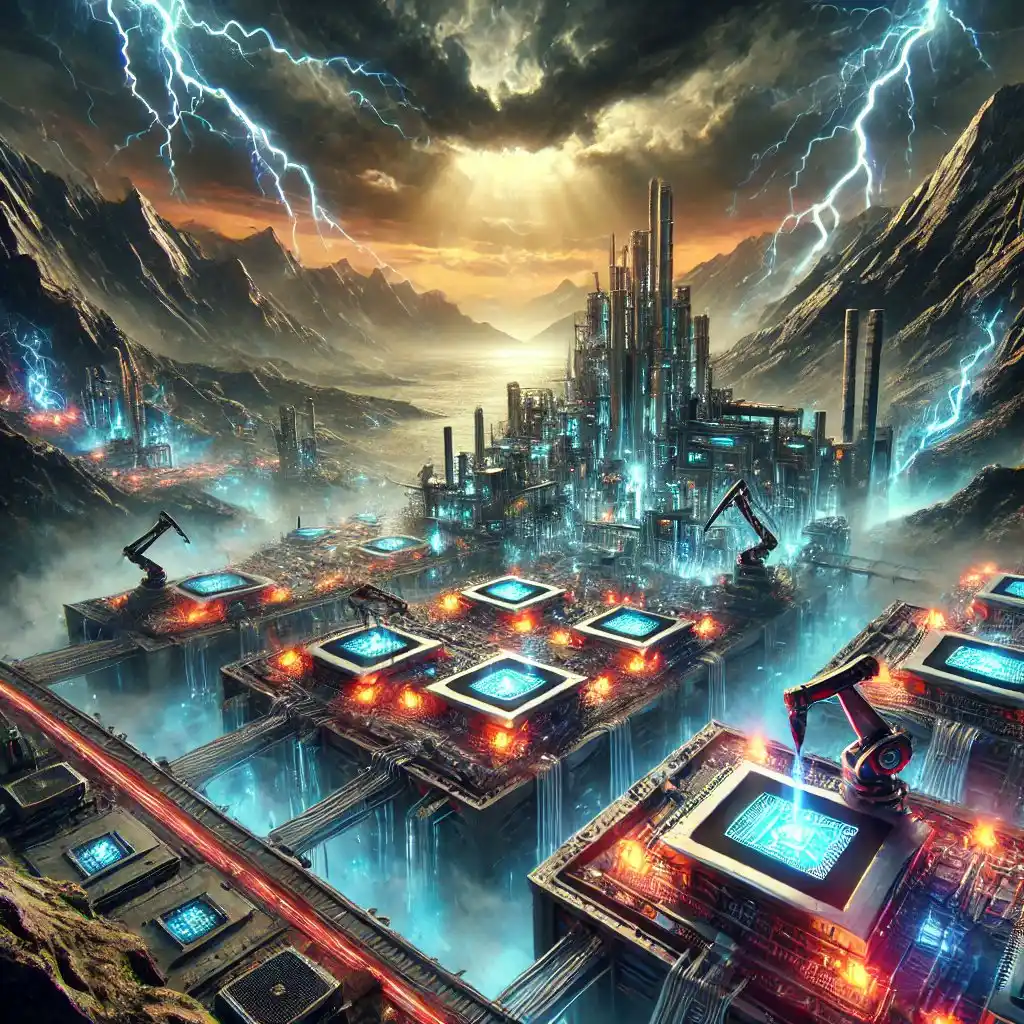
2. Problem Definition and Scope: Unveiling the Hidden Dependencies
To truly grasp the magnitude of the challenge before us, we must first illuminate the intricate web of dependencies that bind our modern world to specific resources – semiconductors and rare earth elements. These are not mere commodities to be traded; they are the elemental forces shaping our technological future. Like blood coursing through the veins of civilization, their flow dictates our strength, vitality, and even our survival.
2.1. The Silent Architects of Modernity: Semiconductors
Semiconductors are the invisible architects of the information age, the bedrock upon which our digital world is built. They are the microscopic switches that control the flow of electricity, the tiny brains that power everything from our smartphones and laptops to the intricate control systems of our power grids, medical equipment, and defense networks. But beneath their seemingly uniform exterior lies a diverse ecosystem, each type of semiconductor serving a unique purpose, and each with its own production vulnerabilities.
We must not simply lump all chips together. The complex world of integrated circuits includes microprocessors that handle the heavy lifting of computation in our computers, memory chips that store our ever-growing data, and power semiconductors that regulate energy flow in electric vehicles and renewable energy systems. Each type, whether crafted from silicon or more advanced materials, represents a specific point of vulnerability, tied to unique fabrication processes and supply lines. These components are not interchangeable; a shortage in one area cannot be addressed by surpluses in another.
The processes involved in crafting these chips are an engineering marvel and a fragile dance of extreme precision. They involve the use of exotic gases, precision lithography, and clean-room environments to create the microscopic circuits on silicon wafers. To think that these microscopic circuit structures are produced to perfection time and time again, is really the mark of the current pinnacle of human ingenuity. The fact that this supply line is so concentrated is cause for grave concern, and highlights the scope of the problem facing us.
2.2. The Unseen Powerhouses: Rare Earth Elements
If semiconductors are the brains of our technology, then rare earth elements are the muscles, unseen yet indispensable. These 17 metallic elements, often found together in the earth’s crust, are not particularly rare in the literal sense, yet their chemical properties make them exceptionally difficult to extract and refine. Each element possesses unique magnetic, catalytic, and conductive characteristics that cannot easily be duplicated, and these properties form the backbone of many critical technologies.
Neodymium, for instance, forms the most powerful permanent magnets known to humankind, essential for electric motors in vehicles, wind turbines, and precision-guided missiles. Dysprosium and terbium, with their high magnetic stability at high temperatures, are indispensable in the motors of electric vehicles and also play a crucial role in radar systems. Lanthanum and cerium are pivotal in catalytic converters and also crucial in creating the specialized glass used in advanced optical lenses and displays. Even seemingly minute traces of these elements are essential in applications ranging from smartphone vibrators to the complex systems that control nuclear reactors.
These elements are not simple metals; they are the keys that unlock technological progress across countless sectors. They are not produced easily: the process involves complex chemical separation techniques, resulting in significant environmental impacts if not managed properly. The fact that the majority of their processing is controlled by a single nation represents not just a dependence but a strategic handicap that must be addressed urgently.
2.3. The Chokepoints: Single Points of Failure
The concentration of both semiconductor and rare earth production in a handful of nations reveals not just an issue of supply, but of dangerous dependencies. The geographic concentration of foundries in Taiwan, and rare earth processing in China, has created what are essentially single points of failure, with far reaching implications if any single point should be targeted by a hostile power. Disruptions can arise from natural disasters like earthquakes or typhoons, but also from more calculated actions like cyber attacks, political instability, and trade restrictions. This vulnerability is not just theoretical – it has already been observed with various microchip shortages, which caused auto plants to shut down and delayed delivery of other critical infrastructure components.
The journey from raw material to finished product is not a single step; it’s a long, interwoven chain with its own upstream and downstream vulnerabilities. Mining, refining, processing and manufacturing are all crucial steps in this process, and each step represents a choke-point where a disruption can cascade throughout the global economy. Any interference at any point could halt a part of the entire system and grind our technological ecosystem to a halt.
This is not merely an economic challenge; it’s a geopolitical and national security crisis in waiting. The lack of diversification and the concentration of production in a single nation threatens the ability of other nations to pursue independent technological development, jeopardizes the availability of key military components and could create widespread economic disruption worldwide. This situation requires immediate and serious attention to avoid a catastrophe of unprecedented magnitude.
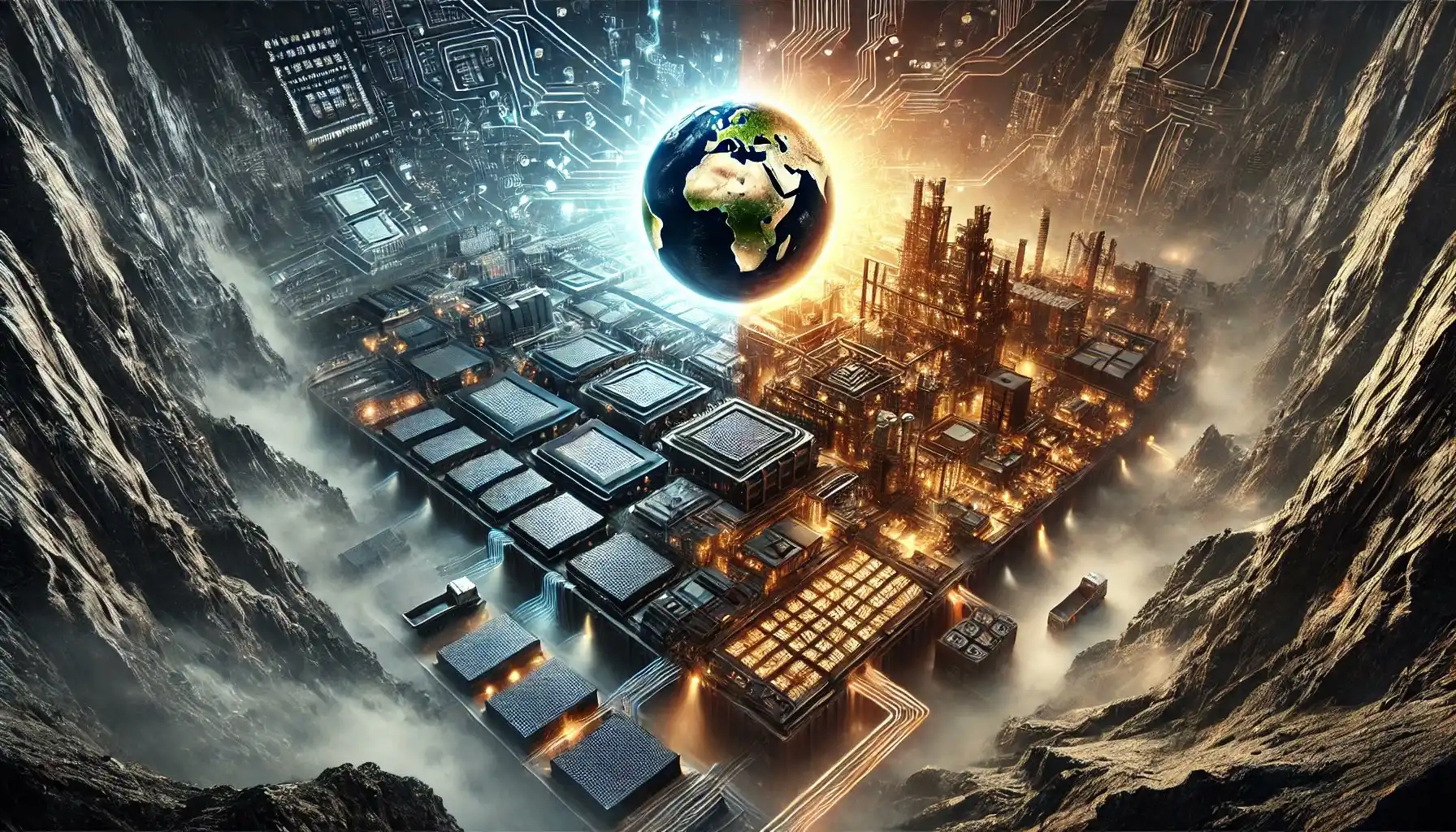
3. Impact Assessment: The Cascading Consequences of Dependence
The vulnerabilities in the supply chains of semiconductors and rare earth metals are not isolated problems;they are the fault lines beneath the foundations of our modern world, with the potential to trigger tremors that could shake our economies, rewrite geopolitical landscapes, and redefine the balance of power. To understand the true gravity of our situation, we must examine the cascading consequences of this dependence across multiple interwoven domains.
3.1. The Economic Earthquake: Price Volatility and Industrial Disruption
The most immediate impact of our supply chain vulnerabilities is the potential for economic chaos. Imagine a world where the prices of essential goods fluctuate wildly, where production lines grind to a halt because of missing components, and where consumers are faced with exorbitant costs and long waiting times. This isn’t an alarmist prediction; it’s a potential reality that we must confront.
The semiconductor industry, with its complex fabrication processes, is particularly susceptible to price volatility. A single disruption at a crucial foundry can ripple across the world, causing shortages and driving up prices for cars, computers, medical devices, and countless other products. The automotive industry, heavily reliant on chips for its modern vehicle systems, becomes especially vulnerable. The lack of supply in the chip market could have a major impact on the production capabilities for car production, and with every car that cannot be produced, more jobs and revenue is impacted.
The rare earth market, even smaller and more tightly controlled, is equally prone to dramatic price swings. A decision by a single dominant processor to limit supply can send prices skyrocketing, making renewable energy technologies and high-tech manufacturing significantly more expensive. The impact is not just felt by consumers; it is felt throughout our entire industrial structure, crippling competitiveness, stifling innovation, and making national economic strategies vulnerable to exploitation by hostile actors. It creates a situation where one country can inflict significant economic harm upon another without ever firing a shot.
The potential for market manipulation is a grave concern. Dominant actors can use their control over supply chains to drive up prices, to punish rivals, or to gain unfair advantages in key industries. This power can translate to inflation, reduced economic growth, and widespread economic instability, creating significant challenges for countries that depend on open and fair markets.
3.2. The Geopolitical Chessboard: Coercion, Conflict, and Shifting Alliances
Beyond the economic sphere, the dependence on specific nations for semiconductors and rare earth elements has profoundly reshaped the geopolitical landscape, introducing new vectors of coercion and conflict. In this new world, trade isn’t just about economics; it’s a strategic tool with the potential to destabilize international relations.
Control over these critical resources allows a dominant power to exert immense political leverage over its neighbors, allies, and competitors. This leverage can manifest in various forms: threatening supply disruptions to extract political concessions, using trade restrictions to punish countries that challenge their interests, and creating dependencies that undermine the sovereignty of other nations. We have already seen these patterns emerge over the last few years.
This power imbalance breeds mistrust and resentment, raising the specter of trade wars, sanctions, and regional conflicts. Nations that feel vulnerable may seek alternative alliances, or adopt more assertive policies, thereby destabilizing the existing international order and leading to a more chaotic and dangerous world.
The race for control over critical resources has the potential to ignite geopolitical flashpoints, especially in areas rich in rare earth deposits or along strategic shipping routes vital for semiconductor trade. The competition for control over this domain can exacerbate existing tensions and create new ones, increasing the risk of armed conflict and proxy wars.
3.3. Military Vulnerability: Eroding National Security and Strategic Advantage
The impact on national security and military readiness is perhaps the most alarming aspect of this dependence. Semiconductors are the brains behind all modern military systems, from the guidance systems in precision-guided missiles to the communication networks that coordinate troop movements. Rare earth elements are equally vital, forming the backbone of the magnets used in military drones, radar systems, and electronic warfare. The inability to guarantee the supply of these components will lead to a dangerous erosion in national defense, which will compromise a country’s strategic advantage in any potential conflict.
Imagine a scenario in which a nation’s military capabilities are diminished because it is unable to access critical components for its weapons systems, or where its communications are jammed by electronic warfare that cannot be properly countered. The disruption of these supply lines can also result in significant operational challenges, including reduced readiness, increased maintenance costs, and a significant deterioration in the capabilities of military forces.
The dependence on foreign sources for critical military components also raises concerns about supply tampering and intellectual property theft. Hostile actors could introduce malicious code into chips, compromise communication systems, and gain access to proprietary technology, undermining the effectiveness of the entire security infrastructure. The vulnerability is not just a question of access; it’s a question of trust, reliability, and the very integrity of our national defenses.
3.4. The Technological Stagnation: Hampered Innovation and Lost Leadership
Finally, the dependence on others for critical resources threatens to stifle technological innovation and hinder human progress. Nations unable to secure their access to semiconductors and rare earth metals risk falling behind in key areas such as artificial intelligence, quantum computing, biotechnology, and green technologies. This is not just a matter of present capabilities;it is about shaping the future, and our dependence on external sources for such critical components can create a cycle where innovation and advancement can stagnate.
The control over these resources also influences the direction of technological research and development. Nations that control critical elements can incentivize R&D in areas that advance their strategic objectives, while penalizing areas that do not fit their agenda. This power imbalance can create a world in which one nation can dictate the path of future progress, hindering the efforts of other nations who wish to compete.
The implications of this for humanity as a whole are significant. A world where only a few nations can lead technological advances is not just unfair; it’s detrimental to the global community. The loss of diverse perspectives and the reduced competition limits the range of technological solutions we can achieve and slows the progress of humanity in the face of global challenges.
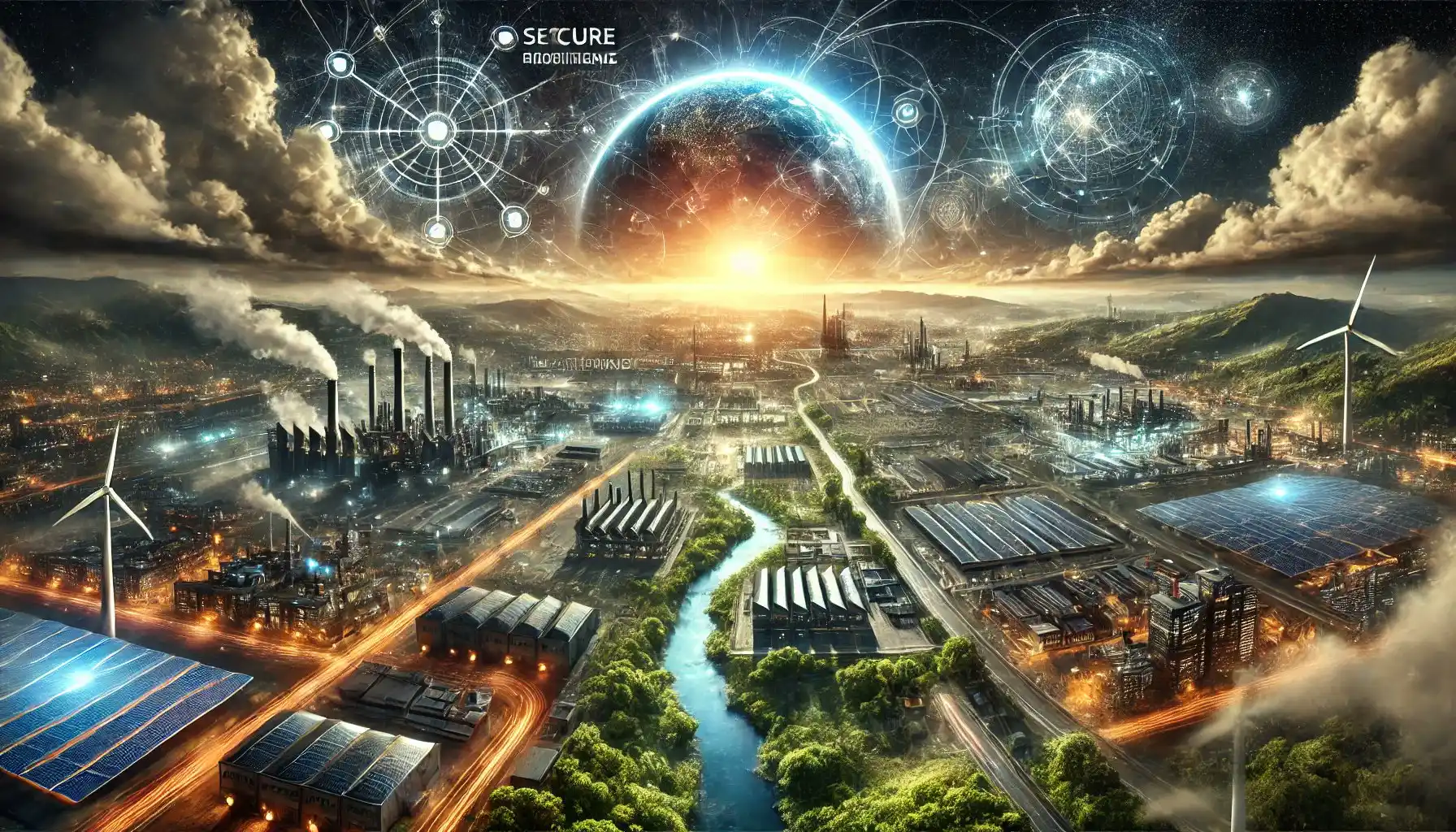
4. Strategic Goals and Objectives: Forging a Path to Resilience and Independence
Having illuminated the intricate web of vulnerabilities that threaten our technological and economic foundations, we must now turn our gaze towards a clear vision of the future – a set of strategic goals and objectives that will guide our journey toward a more secure, resilient, and independent world. These goals are not merely tactical fixes; they are the pillars upon which we must build a future free from the constraints of single-source dependencies.
4.1. The Bedrock of Security: Supply Chain Resilience
At the heart of our strategy lies the imperative of supply chain resilience – a fundamental shift from dependence on a few points of failure to a robust, diversified ecosystem that can withstand any shock. This is not simply about having backup plans; it is about building a system that can adapt, evolve, and thrive in the face of constant change.
Our first objective is diversification – the establishment of multiple sources for semiconductors and rare earth elements. This means actively fostering new mining and processing facilities in allied nations, incentivizing domestic production within our borders, and building a network of manufacturing hubs that spans the globe. This shift will remove the stranglehold of concentrated supply lines, thereby reducing the risks of disruption from natural disasters, political conflicts, and economic coercion.
Redundancy is another essential pillar of resilience – the creation of backup systems and alternative suppliers that can seamlessly step in during times of crisis. This means investing in excess capacity, identifying and validating alternative sources, and building a network of relationships with other friendly nations who are committed to a reliable supply of these crucial resources. This isn’t merely about having a plan B; it’s about building a system that is inherently resistant to disruption, that can seamlessly shift from one supplier to the next, and where a crisis in one part of the world doesn’t become a crisis across the entire system.
The third element of this pillar is flexibility – the ability to quickly respond to changes in demand and supply. This means embracing advanced manufacturing technologies, improving logistics and distribution networks, and fostering a culture of adaptability and innovation. In a world where change is the only constant, we must be ready to anticipate and respond to any challenge, swiftly and decisively. We must strive for a system where we can adjust our supply chains to market shifts quickly, and create a system where any supply disruption can be handled without a major disruption to our global economy.
Finally, we must pursue localization – the building of domestic and allied manufacturing capacity that reduces the need to depend on unreliable sources. This means supporting local businesses, investing in infrastructure, and building the skills required to create a technological ecosystem within our sphere of influence that will reduce our dependence upon adversarial nations. Our target is to achieve diversification of at least 50% of supply chains by 2035, securing a stronger foundation for our collective economies.
4.2. The Power of Innovation: Technological Independence
Beyond supply chain resilience lies the transformative power of technological innovation – a catalyst for reshaping the landscape of resource utilization and forging a future where dependence is a relic of the past. We must unlock our own ingenuity and pursue technologies that can circumvent the limitations of existing materials and supply chains.
First, we must aggressively pursue alternative materials – a quest to find substitutes for rare earth elements and semiconductor materials, reducing our reliance on resources that are geographically constrained. This means investing heavily in research and development, supporting academic institutions, and encouraging private sector innovation that will create entirely new materials, alloys, and compounds that can perform the same, or even better, functions than existing resources. This isn’t about incremental improvements; it’s about fundamentally transforming the way we think about materials, building a future that relies not on scarcity, but on the abundance of creative solutions. This includes exploring emerging options like graphene for semiconductor production and developing quantum sensors for enhanced detection and navigation.
Second, we must revolutionize our approach to recycling technologies, transforming waste streams into valuable resources and reducing the need for virgin materials. This means not only recovering metals from discarded products, but also developing methods to extract rare earth elements from existing industrial waste, tailings, and even from seemingly inaccessible areas such as landfill. This shift will not only reduce our dependence on mining but also create a circular economy that is more sustainable and resilient. This requires a commitment to bio-mining techniques for rare earth extraction and the development of new materials designed for easy recycling.
Third, we must become leaders in advanced manufacturing, embracing next-generation techniques that can reduce production costs, enhance efficiency, and produce chips and other components with higher levels of accuracy and sophistication. This means investing in robotics, artificial intelligence, nanotechnology, and other advanced manufacturing processes that will not only improve our production capabilities but also create high-quality jobs and foster a new technological revolution.
Finally, we must champion green technologies – a commitment to developing environmentally sustainable practices for mining, refining, and manufacturing. This means not just seeking to reduce the impact of these industries on our planet, but also embracing new innovations in renewable energy and sustainability that can protect our natural resources for generations to come.
4.3. The Foundation of Cooperation: Geopolitical Stability
Our third strategic objective is to create geopolitical stability – a world where nations are united by a common purpose, and where the control of resources is not a source of division but a catalyst for international collaboration. In a world where interdependence and cooperation are essential, our approach to resources must align with our shared goals.
First, we must foster international cooperation – building alliances and partnerships with other nations that share our values and our commitment to the rule of law. This will mean leveraging our current strategic alliances, such as NATO and the Quad, and creating new international frameworks for cooperation that will allow allied nations to share not just resources, but also information and technology. This will help create a shared network of trust and collaboration that can help counter the exploitation of resources by hostile nations.
Second, we must use diplomacy to establish fair trade agreements and robust dispute-resolution mechanisms. This means engaging in constructive dialogue, establishing open lines of communication, and creating international institutions that can resolve disputes without resorting to coercion and conflict. This will help facilitate a system where nations can trade without fear of disruption and can be confident that their interests will be protected.
Third, we must embrace transparency – promoting open access to information and resources, and fostering a culture of trust between nations.
This will mean creating a global system of information sharing, where all nations can know the origin and destination of materials, and a system of verifiable checks and balances that can hold all nations accountable for their actions.
Finally, we must support economic development in resource-rich nations, empowering them to become full partners in the global economy, not mere suppliers of raw materials. This will help alleviate global poverty, promote shared economic growth, and allow resource-rich nations to lift their own populations out of poverty and build their own secure futures.
4.4. The Cornerstone of Prosperity: Economic Security
Finally, we must ensure economic security – a world where markets are stable, where innovation is rewarded, and where our economies are resilient against external shocks. This means not just securing our supply of resources, but also creating a framework that promotes fairness, innovation, and shared economic prosperity.
First, we must build market stability, reducing price volatility, and preventing speculation and manipulation. This will mean creating international stockpiles, implementing effective regulations, and fostering a transparent market that is fair and accessible to all participants.
Second, we must champion fair competition – preventing monopolistic practices and ensuring a level playing field for all businesses, large and small. This will mean creating international institutions that can regulate the market, prevent unfair trade practices, and uphold the principles of fairness and competition for all.
Third, we must promote competitiveness – rewarding innovation, supporting research and development, and fostering a climate of dynamism and entrepreneurial activity. This means continuing to invest in education, science, and technology, in order to ensure that our economies remain at the cutting edge of progress.
Finally, we must create jobs in manufacturing and technology sectors, driving economic growth and ensuring that the benefits of our prosperity are shared by all. This will mean incentivizing companies to create jobs within our own borders, supporting vocational training and skills building, and ensuring that everyone can participate in the technological revolution.
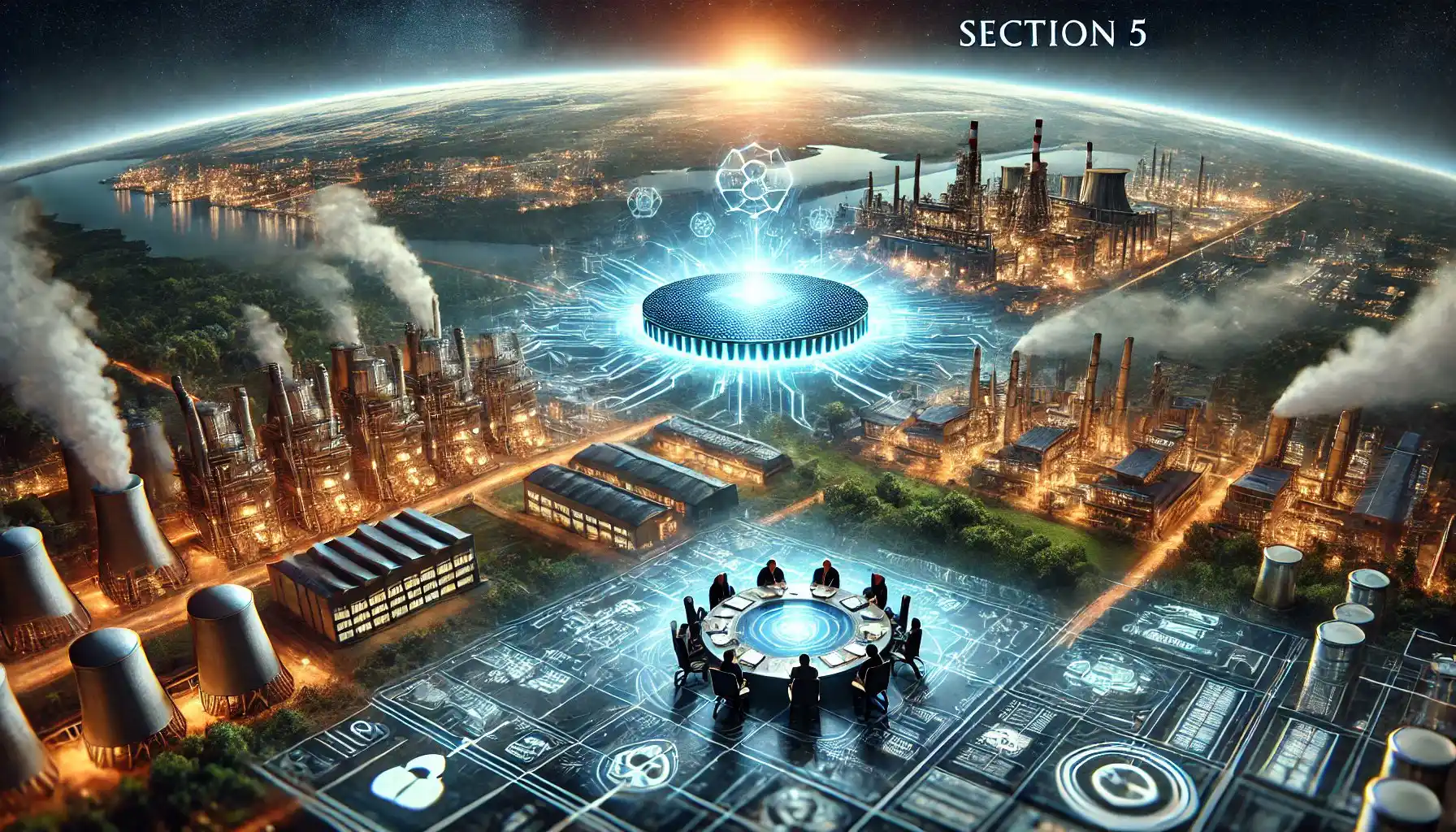
5. Actionable Strategies: A Blueprint for a Secure and Independent Future
The path to a resilient and independent future is not paved with good intentions alone; it demands a series of bold, well-defined actions that translate our strategic goals into tangible realities. This is not merely a checklist of tasks but a blueprint for transformation, a roadmap for building an era of shared security and prosperity.
5.1. Re-Forging the Supply Chain: Diversification in Action
The first line of action lies in re-forging our supply chains, breaking free from the dangerous grip of geographical concentration. This isn’t just about shifting the location of production; it’s about fundamentally altering the power dynamics that control these critical resources.
We must initiate a global endeavour to establish regional processing and manufacturing hubs in allied countries. This isn’t about replicating existing facilities; it’s about building ustate-of-the-art ecosystems that incorporate the latest advancements in technology and environmental responsibility. The focus must be on countries like Australia, Canada, Brazil, and those in Africa, that can all be empowered to take part in global supply chains with the help of democratic nations. Each hub must specialize in various aspects of the process, forming a diverse and interconnected network of production.
These hubs cannot exist in isolation; we must incentivize domestic production with tax breaks, subsidies, and grants that encourage private sector participation. We must create a favourable business environment that will attract new industries, reward innovation, and generate long-term economic benefits. This isn’t about simply handing out money; it’s about crafting a strategic vision that aligns private sector interests with national priorities. This must also consider ethical practices in supply chains, ensuring fair labour practices and responsible resource extraction across all parts of our system. We must also promote skills training and education, to equip the next generation with the knowledge and ability to succeed in our new global supply chain networks, empowering allied nations and creating a system of sustainable opportunity for all.
A diverse supply chain is only as robust as its logistical network, so we must develop secure transport and logistics pathways, from raw materials to finished products. This means investing in modern infrastructure, exploring innovative solutions such as autonomous logistics systems, and developing cyber-secure information networks to protect these supply chains from disruption and sabotage. This isn’t just about moving materials efficiently; it’s about safeguarding the very arteries of our technological ecosystem.
5.2. The Spark of Innovation: Igniting a Technological Renaissance
Our second set of actions is to ignite a technological renaissance, sparking innovation that will drive us beyond the limitations of current resources and processes. This isn’t about accepting our dependencies; it’s about leveraging our ingenuity to overcome them.
We must dramatically increase funding for research and development (R&D) into alternative materials, with the aim of finding substitutes for rare earth elements and semiconductor materials. This is an investment in the future, a wager on the ability of human ingenuity to break free from the constraints of the present. This isn’t about incremental improvements; it’s about fundamentally transforming the way we think about materials, building a future that relies not on scarcity, but on the abundance of creative solutions. This includes exploring emerging options like graphene for semiconductor production and developing quantum sensors for enhanced detection and navigation.
We must support the development of sustainable mining and refining practices, pioneering a new approach to resource extraction that is environmentally responsible and socially conscious. This means adopting circular economy principles, reducing waste, and exploring innovative methods of mining and processing, in order to protect the natural resources that future generations will rely upon. This isn’t about simply mitigating damage; it’s about creating a system that regenerates resources and is consistent with the needs of our planet. This requires a commitment to bio-mining techniques for rare earth extraction and the development of new materials designed for easy recycling.
Finally, we must invest in advanced semiconductor manufacturing equipment, creating the means to produce the next generation of chips with greater efficiency, precision, and flexibility. This means creating specialized facilities that are able to produce the most advanced chips on earth, while allowing for a domestic supply chain that cannot be used against us by adversarial powers.
5.3. Forging Global Bonds: Cooperation as a Strategic Imperative
The third set of actions lies in fostering genuine cooperation, forging strong alliances and partnerships with nations who share our vision. This isn’t just about forming agreements on paper; it’s about creating bonds of mutual trust, shared responsibility, and enduring friendship.
We must strengthen our existing alliances, using platforms like NATO and the Quad to create strategic partnerships and develop comprehensive supply chain agreements for critical materials. This isn’t just about making alliances in the present, it’s about building networks that will create a safer and more secure world for future generations.
We must proactively negotiate fair trade agreements, ensuring reciprocal market access and creating a level playing field for all nations. This will require a strategic vision that prioritizes free and open trade, while safeguarding our own strategic interests and ensuring that our markets remain fair and competitive. This isn’t about protectionism; it’s about creating a system that rewards innovation and that fosters shared prosperity for all.
Finally, we must enhance diplomatic and military cooperation on supply chain security, building a collective defense against any threat of disruption. This means sharing information and intelligence, establishing joint task forces that can respond to supply chain crises, and working together to prevent the weaponization of trade and the exploitation of critical resources. This is an acknowledgment that our security is not separate but is tied together, and our strength lies in the unbreakable bonds of international cooperation.
5.4. Protecting Our Economic Foundation: Security and Stability
Our final set of actions is to protect the very foundation of our economic prosperity by creating mechanisms that promote market stability, fairness, and transparency. This isn’t just about protecting our own interests; it’s about creating a global system where all can participate and benefit from shared economic growth.
We must implement measures to regulate trade and prevent monopolistic behaviour, ensuring that the market operates in a fair and transparent manner. This will mean creating new international bodies that are able to monitor and enforce our trade agreements, while also adopting effective mechanisms to address any unfair or monopolistic actions that are intended to disrupt the marketplace.
We must establish international stockpiles of critical materials to safeguard against supply disruptions and protect against market manipulation. This will mean working collaboratively with our allies, and establishing a secure system of storage that allows for quick and efficient distribution of essential materials during times of crisis.
We must implement robust monitoring mechanisms that will detect and prevent market manipulation, identifying potential threats and taking immediate action to prevent instability. This will require investment in advanced technology and intelligence capabilities, enabling our institutions to detect, respond to, and prevent malicious actors from manipulating market forces for political or financial gain.
Finally, we must facilitate information sharing and transparency, creating a system where all nations can confidently participate in the market knowing that they have access to the data needed to make sound decisions. This will mean establishing a network of international cooperation that is dedicated to information sharing, in order to promote global stability and economic prosperity.
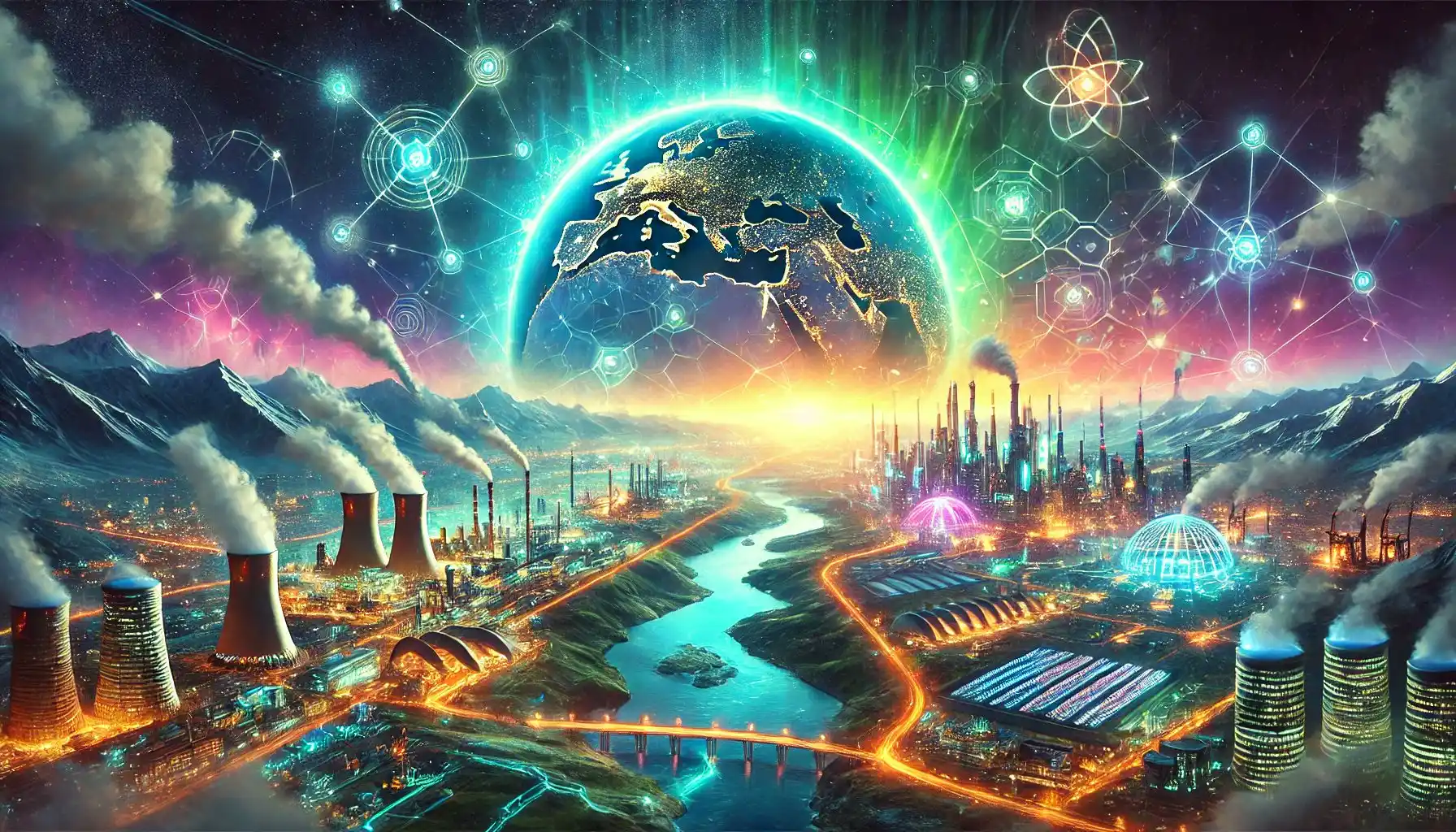
6. Implementation and Evaluation: A Dynamic Path to Enduring Resilience
The most brilliant strategies are rendered meaningless without effective implementation and rigorous evaluation. The journey toward securing our critical supply chains is not a static process; it is a dynamic endeavor that demands continuous monitoring, adaptation, and collaboration. This section outlines a pathway not just for action, but for a sustainable cycle of improvement and innovation.
6.1. The Pulse of Progress: Monitoring and Measuring Our Impact
Our first step is to establish robust mechanisms for monitoring progress, tracking our achievements, and identifying areas where we must adjus our course. This isn’t about gathering data for data’s sake; it’s about using information to guide our decisions, make necessary changes, and hold ourselves accountable for results.
We must create clear, measurable metrics for success, moving beyond simple benchmarks to embrace a deeper understanding of the complexities of our supply chains. This means tracking not just the volume of production and the price of resources, but also the environmental impact, labour conditions, and the economic benefits to allied nations. We must adopt a holistic approach that takes into account all facets of these global supply chains, and that measures the total impact on our own economic and national security, as well as the impact of our actions on other nations.
These metrics must be transparent and publicly accessible, allowing stakeholders to track our progress, hold us accountable, and offer new insights and perspectives. This isn’t about hiding our results, but about creating a shared endeavour, where all parties are able to participate in the journey to achieve long term economic, military, and technological independence.
We must establish real-time data-tracking mechanisms, employing the latest technologies to monitor every facet of our supply chain. This means investing in state-of-the-art sensor networks, utilizing advanced analytics, and exploring innovative techniques for data visualization, that will provide us with the most accurate and up to date information available.
Finally, we must implement regular reviews and performance assessments, conducting rigorous analysis of our strategies and making necessary adjustments based on real-world data. This isn’t about sticking to a plan regardless of circumstances, it is about embracing a continuous process of innovation and refinement, based on data and insights that will allow us to continuously adjust our course based on the information available to us. We must also be aware that those who benefit from the current system may attempt to take countermeasures to undermine our efforts. Therefore, we must build into our implementation the methods required to proactively address these challenges.
6.2. The Art of Adaptation: Embracing Change and Navigating Uncertainty
Our second imperative is to embrace the art of adaptation, preparing ourselves to adjust our strategies as technologies evolve, and as geopolitical forces inevitably shift. This isn’t about fearing the unknown; it’s about building a system that is designed to embrace change and navigate uncertainty with courage and resolve.
We must be prepared to adjust our strategies as technologies change, recognizing that the path to a secure future is not a straight line, but a dynamic and unpredictable journey. This means investing in future technologies, encouraging forward-thinking policies, and building an internal organizational structure that promotes an entrepreneurial mindset.
We must build flexibility into the framework, recognizing that the greatest threat comes not from foreseen crises but from unexpected disruptions and surprise attacks. This means developing a system that is not brittle or inflexible, but robust and resilient, designed to bounce back from any unforeseen circumstances. This also means planning for the unexpected, and cultivating the internal capacity to respond to an uncertain future with agility and resolve.
We must also embrace experimentation, creating an environment where innovative ideas can be tested and implemented, and where failures are seen not as setbacks, but as valuable lessons learned along the way. This means supporting an ecosystem of entrepreneurs, scientists, and researchers, who are empowered to explore new technologies and propose new strategies. This is not about avoiding risk, but it’s about strategically managing risk and understanding the importance of learning from mistakes.
6.3. The Power of Collaboration: Shared Responsibility and Collective Action
Our final imperative is to cultivate a culture of shared responsibility, recognizing that securing our critical supply chains is not an endeavour for governments alone, but a collective effort that involves governments, industries, research institutions, and civil society.
We must proactively engage all stakeholders, creating opportunities for open communication, collaborative planning, and collective action. This means actively reaching out to our partners in the private sector, inviting experts from academia to share their ideas, and working with communities to build a movement for change. This is not just a call for compliance, but a call to join in a shared journey, and for our institutions to act in a manner that fosters a strong national movement, and a strong global movement for change and collaboration.
We must foster a culture of dialogue, actively soliciting input from diverse perspectives, in order to ensure that our policies are just, fair, and effective. This means embracing a process of open and transparent conversation, in order to create a global consensus and a movement towards common goals.
Finally, we must establish frameworks for ongoing collaboration, creating institutions and partnerships that will guide our collective effort far into the future, working together to create a more secure and equitable national community and global community. This is not about building for the short-term, it’s about creating enduring institutions that will stand the test of time and that will protect our national economies, our global economies, our security, and our very way of life.
6.4. Conclusion: A Call to Courage, a Vision of Shared Destiny
We stand at a crossroads, a moment in history where the decisions we make today will shape the course of our technological and economic future for generations to come. The vulnerabilities in our supply chains for semiconductors and rare earth metals are not merely economic challenges; they are strategic imperatives that demand bold action, visionary leadership, and an indomitable commitment to a more secure, resilient, and independent world.
This report has unveiled the complex web of dependencies that threaten our prosperity, national security, national stability and global stability. We have seen how the concentration of production in a few select nations has created a system ripe for coercion, manipulation, and disruption. We have explored the far-reaching consequences of our inaction, the potential for economic collapse, geopolitical instability, military weakness, and technological stagnation.
Yet, within this challenge lies an opportunity – an opportunity to forge a new path, to reclaim our destiny, and to build a world where innovation, cooperation, and shared prosperity are the guiding principles. This is not a problem without solutions; it is a call for courage, a summons for leadership, and a declaration that we are ready to take charge of our future.
We must embark on a transformative journey, embracing diversification, innovation, collaboration, and responsibility as the cornerstones of our strategy. We must establish regional processing and manufacturing hubs in allied nations, invest in breakthrough technologies, and build alliances that unite us in a common purpose. We must create fair markets, promote open access to information, and foster a global economic system that is not based on dependence but on mutual trust and shared prosperity.
This journey is not for the faint of heart; it will require bold decisions, unwavering commitment, and the collective resolve of all who are called to the task. We must embrace the power of human ingenuity, recognize that we are not constrained by scarcity or limitations, and believe that a more secure and sustainable world is not just a possibility, but a moral imperative.
The path forward is not a straight line; it is a dynamic and unpredictable journey that demands continuous monitoring, adaptation, and collaboration. We must establish clear metrics for success, track our progress transparently, embrace change as an opportunity for growth, and foster a culture of shared responsibility. Our success will not be measured by what we have achieved today, but by our ability to adapt, learn, and continue to grow in the years ahead.
Let this report serve as a call to action, a declaration that the time for complacency is over, that the moment for visionary leadership is now, and that together, we can build a future that is not just more secure but more prosperous, equitable, and sustainable for all. This is not about protecting ourselves alone; it’s about safeguarding the legacy we leave behind for future generations, and it is about the type of world that we want to live in.
Let us not fear the challenges ahead; let us embrace them as opportunities to demonstrate the very best qualities of humanity: our creativity, our courage, our compassion, and our unwavering belief in the power of human ingenuity. Let us be the generation that seized the moment, that transformed challenges into opportunities, and that forged a path toward a future of peace, prosperity, and shared destiny. Let us create a future where the national communities and global community is united in shared prosperity, global cooperation, and technological advancement that benefits all of humanity. Our goal is to achieve national industrial, technological, political and social renaissance for all of the nations, a type of global renaissance characterized by sustainable resource use and peaceful collaboration, industrial and technological progress, moral and philosophical renewal, where the power of technological progress is used for the betterment of the entire world.
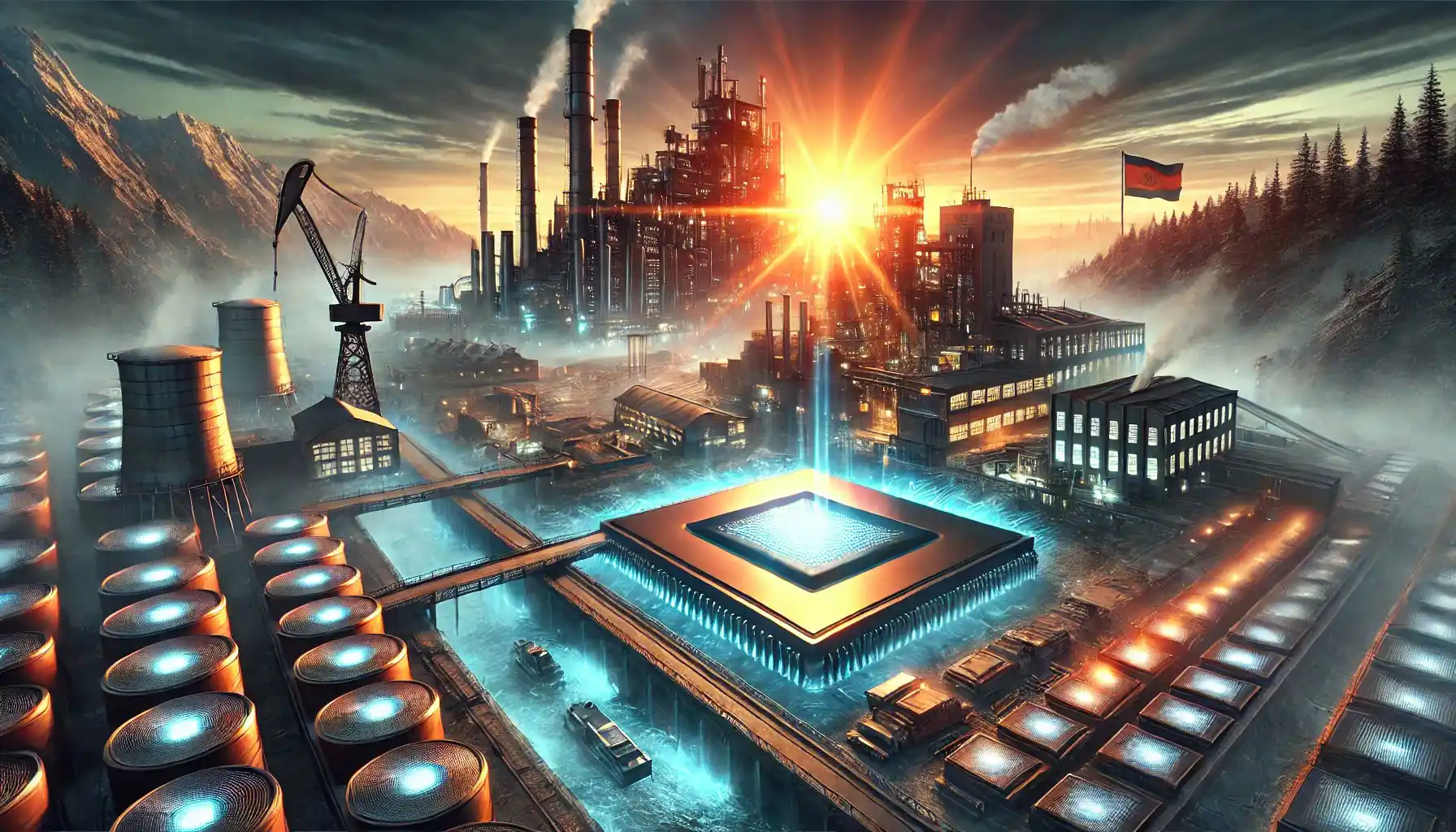
7. References
Title: “Semiconductor Industry Association (SIA). (2023). State of the U.S. Semiconductor Industry. Retrieved from”https://www.semiconductors.org/wp-content/uploads/2023/09/SIA_2023-State-of-the-Industry-Report.pdf
Title: “McKinsey & Company. (2022, April 13). The semiconductor decade: A trillion-dollar industry. Retrieved from”https://www.mckinsey.com/industries/semiconductors/our-insights/the-semiconductor-decade-a-trillion-dollar-industry
Title: “U.S. Geological Survey (USGS). (2023). Mineral Commodity Summaries 2023. Retrieved from” https://pubs.usgs.gov/periodicals/mcs/2023/mcs2023.pdf
Title: “World Bank. (2020). Minerals for Climate Action: The Mineral Intensity of the Clean Energy Transition. Retrieved from” https://documents1.worldbank.org/curated/en/302671600087231869/pdf/Minerals-for-Climate-Action-The-Mineral-Intensity-of-the-Clean-Energy-Transition.pdf
Title: “Council on Foreign Relations. (2021, November 15). The Global Chip Shortage. Retrieved from” https://www.cfr.org/backgrounder/global-chip-shortage
Title: “International Monetary Fund (IMF). (2023). World Economic Outlook, April 2023: A Rocky Recovery. Retrieved from” https://www.imf.org/en/Publications/WEO/Issues/2023/04/11/world-economic-outlook-april-2023
Title: “World Trade Organization (WTO). (2023). World Trade Outlook and Statistics, April 2023. Retrieved from” https://www.wto.org/english/res_e/statis_e/wts2023_e/wts2023_e.pdf
Title: “Chatham House. (2022, September 8). The Geopolitics of Semiconductors: How a Race for Tech Supremacy is Reshaping World Order. Retrieved from” https://www.chathamhouse.org/2022/09/geopolitics-semiconductors
Title: “Center for Strategic and International Studies (CSIS). (2023, November 21). The Implications of the Global Semiconductor Race for U.S. National Security. Retrieved from” https://www.csis.org/analysis/implications-global-semiconductor-race-us-national-security
Title: “National Academies of Sciences, Engineering, and Medicine. (2022). Frontiers in Semiconductor Research: A Decadal Survey. Retrieved from” https://nap.nationalacademies.org/catalog/26448/frontiers-in-semiconductor-research-a-decadal-survey
8. Related Content:
SGT Tech Design Page:https://skillsgaptrainer.com/category/creative-skills-mastering-the-digital-craft/
To see our Donate Page, click https://skillsgaptrainer.com/donate
To see our YouTube Channel, click https://www.youtube.com/@skillsgaptrainer

